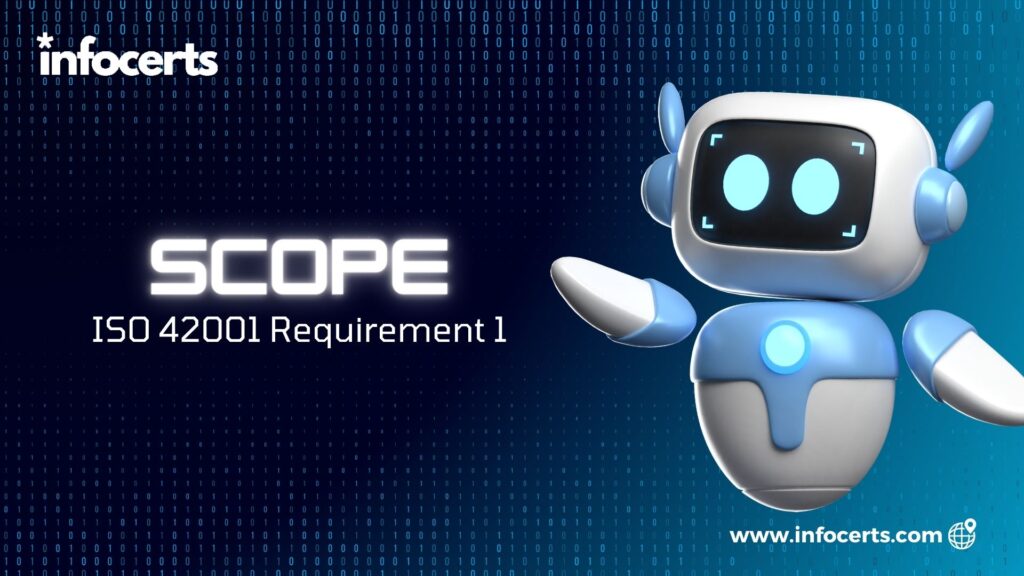Introduction
ISO 42001, the international standard for Facility Management (FM) systems, provides guidelines for organizations to establish, implement, maintain, and improve their FM systems. Requirement 1 of ISO 42001 focuses on defining the scope of the FM system. In this blog post, we’ll explore the importance of scoping, how to define it, and practical examples.
Importance of Scoping
The scope sets the boundaries for your FM system. It clarifies what is included and excluded, ensuring that efforts are appropriately directed. A well-defined scope prevents confusion, aligns stakeholders, and supports effective FM practices.
Defining the Scope
- Organizational Boundaries: Start by identifying the organizational boundaries. Consider whether the FM system covers a single site, multiple sites, or the entire organization.
- Functions and Services: Specify the functions and services within the scope. For example:
- Geographical Coverage: Define the geographical coverage. Is it limited to a specific region, country, or global?
- Assets and Infrastructure: List the assets and infrastructure covered. Include buildings, equipment, utilities, and grounds.
- Stakeholders: Identify stakeholders impacted by the FM system. This could include employees, contractors, visitors, and regulatory bodies.
Examples
- Example 1 – University Campus FM System:
- Scope: The FM system covers all buildings, grounds, and utilities within the university campus.
- Exclusions: Research labs managed separately.
- Example 2 – Corporate Office FM System:
- Scope: The FM system includes office buildings, parking lots, and common areas.
- Exclusions: Manufacturing facilities in a different location.
Implementation Techniques
- Engage Stakeholders: Involve relevant stakeholders (management, employees, FM staff) in scoping discussions.
- Document Clearly: Write a concise scope statement, including in the FM policy.
- Review and Update: Regularly review and update the scope as organizational needs evolve.
Auditing Techniques
- Document Review: Examine FM policies, procedures, and scope statements.
- Interviews: Interview FM personnel and stakeholders to validate the scope.
- Site Visits: Visit facilities to verify alignment with the defined scope.
Conclusion
ISO 42001 Requirement 1 ensures that your FM system has a clear scope. By defining it effectively, you set the stage for successful FM practices and continuous improvement.
Remember, scoping is not static; it adapts as your organization grows and changes. Keep it relevant and aligned with your strategic goals.
FaQs:
- What is Adobe Acrobat Pro?
- Why should I move to Acrobat Pro subscription?
- Which products make up the Adobe Acrobat family of software?
- How does product activation work in Acrobat?
- What is Adobe Creative Cloud?
——————————————————————————————————————–
Infocerts, 5B 306 Riverside Greens, Panvel, Raigad 410206 Maharashtra, India
Contact us – https://www.infocerts.com

